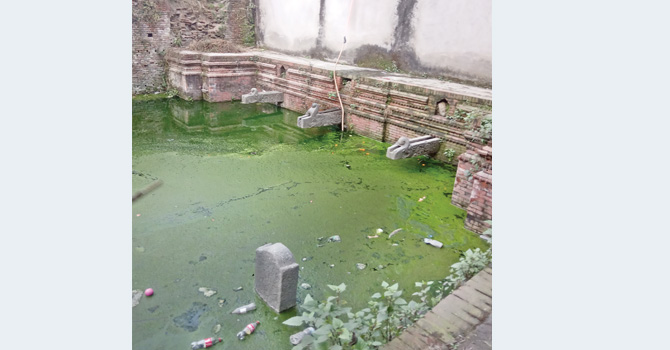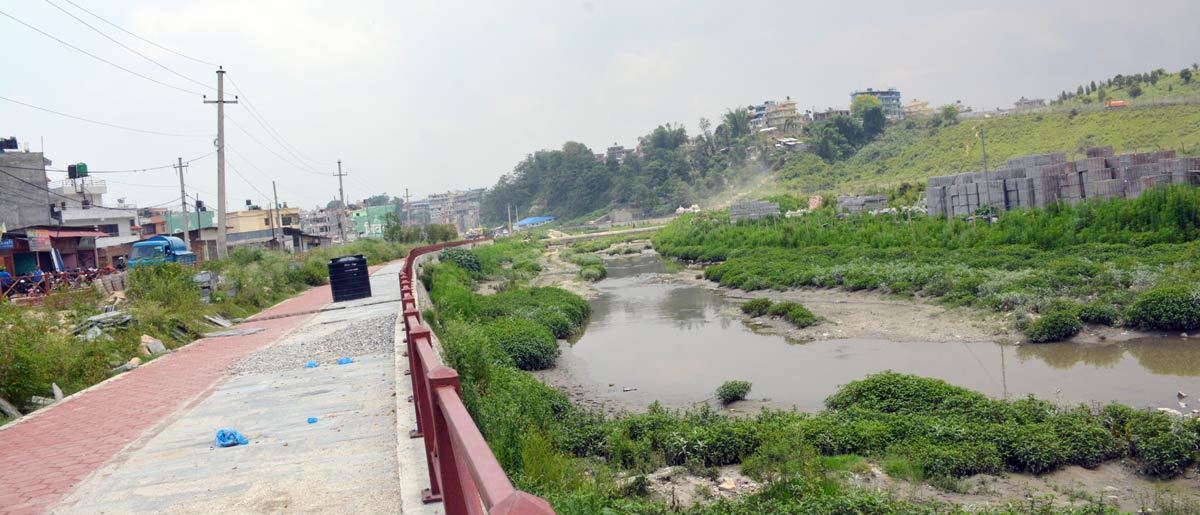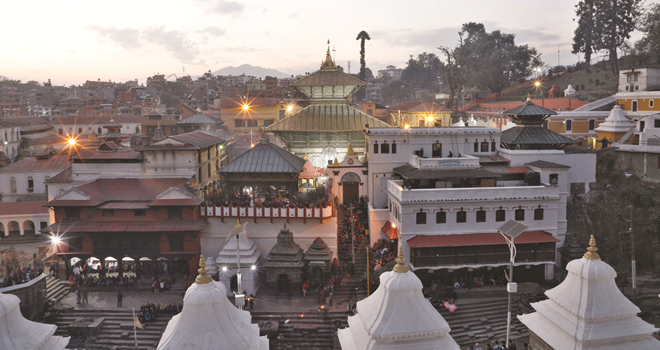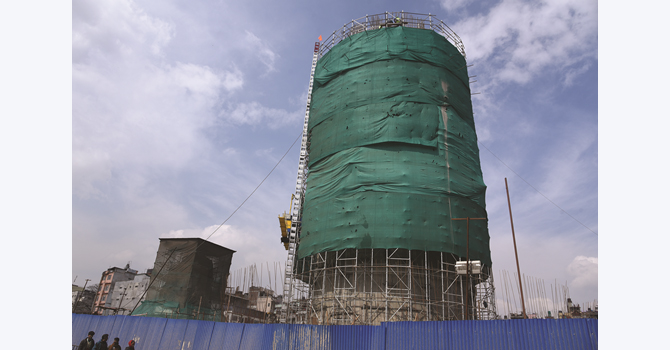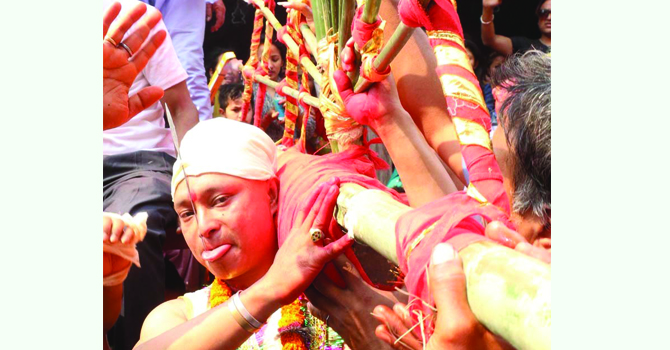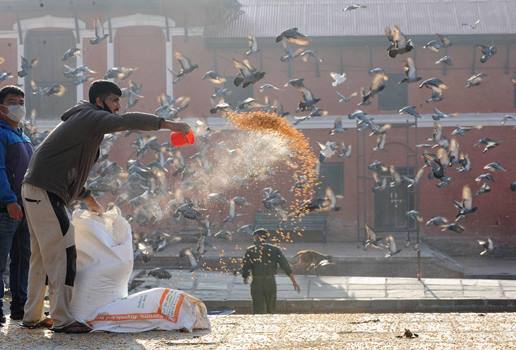Nil Barahi dance: Some sessions can run for 15 hours
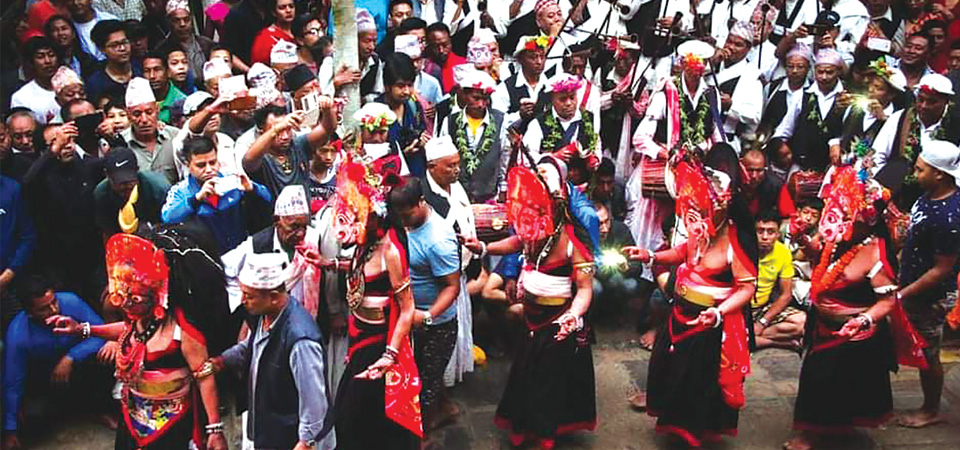
By Binu Shrestha
Kathmandu, Aug. 25: The historic Nil Barahi Dance of Bode has begun from Tuesday.
The masked dance, performed for three days and four nights from Bhadra Krishna Dwitiya to Panchami, is believed to have been started by King Subarna Malla around 1511 AD (Nepal Sambat 631) and used to be performed by members of the Tha Shrestha community of Bode. However, for the past 43 years, it has been performed by the Aduwa Shrestha of Lachhi Tole.
The dance begins and ends at Akha, the sacred spot in Lachhi near the Bode Narayan Temple. The dancers circumambulate several religious shrines located in the Lachhi Tole, Bishnughat Tole, Bhagu Tole, Khasi Tole and the Layaku area.
The performers of the tantric dance are called Devgans (God’s people). There are 19 Devgans associated with the Nil Barahi Dance, of whom, one performs as Bhairav, four as Nil Barahi, four as Kumari, four as Ganesh, four as Singh and two as Dwarpal.
However, nine of the 19 Devgans are now in their late 70s, having to dance in their old age because the youngsters are not interested in partaking in the ritual ballet.
Prem Chandra Aduwa Shrestha is 70 years old and will be performing the dance for the 63rd time this year. He believed that the young people were put off by the strict rituals the Devgans have to follow.
“There are restrictions on what the dancers can eat and drink, how they can sit and who they are allowed to talk with. They also have to dance bare feet, even if it is raining. Their steps have to match with the beat of the music and some dances can last for up to 15 hours,” Shrestha said, calling these the factors keeping the new generation away.
The lack of financial incentives also deters potential participants, Shrestha remarked. “Each dancer puts in Rs. 50,000 to Rs. 60,000 from their own pockets to conduct the dance,” he said, adding, “The Madhyapur Thimi Municipality provides Rs. 250,000 every year but it is nowhere near enough. The Nil Barahi Dance Guthi has been continuing the dance with great difficulty and cannot give anything to the dancers for their efforts.”
Dances like these provide identity to Bode and make Madhyapur Thimi a living museum. However, Shrestha worries that it might not continue for long because it is getting increasingly harder to find dancers. “Recently, the dancers playing the roles of Singh, Kumari and Dwarpal passed away and we had to struggle a lot to find people willing to take their place. We need to do something to attract people,” he expressed.
Recent News

Do not make expressions casting dout on election: EC
14 Apr, 2022
CM Bhatta says may New Year 2079 BS inspire positive thinking
14 Apr, 2022
Three new cases, 44 recoveries in 24 hours
14 Apr, 2022
689 climbers of 84 teams so far acquire permits for climbing various peaks this spring season
14 Apr, 2022
How the rising cost of living crisis is impacting Nepal
14 Apr, 2022
US military confirms an interstellar meteor collided with Earth
14 Apr, 2022
Valneva Covid vaccine approved for use in UK
14 Apr, 2022
Chair Prachanda highlights need of unity among Maoist, Communist forces
14 Apr, 2022
Ranbir Kapoor and Alia Bhatt: Bollywood toasts star couple on wedding
14 Apr, 2022
President Bhandari confers decorations (Photo Feature)
14 Apr, 2022


